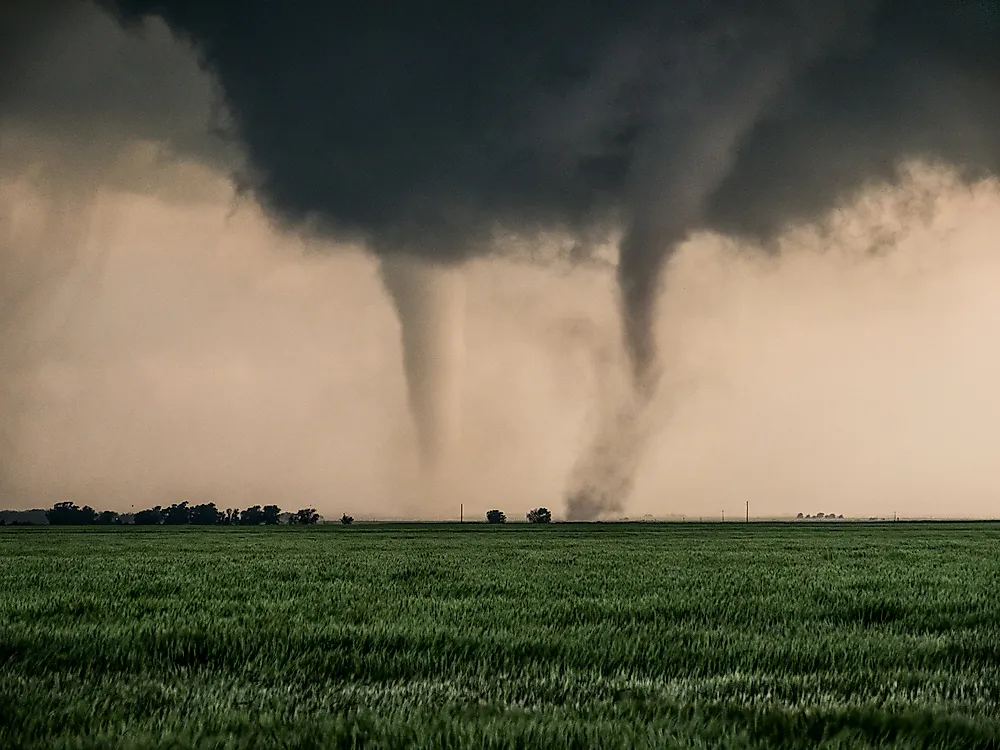What Causes A Whirlwind?

A whirlwind is defined as a vertical column of wind, or vortex, which is formed by sudden changes in atmospheric pressure. The energy produced by these winds enable them to pick up the debris of varying sizes, including snow, leaves, water, dust, and even fish. In extremely rare cases, whirlwinds formed near wildfires can pick up flames and form towering fire whirls. However, the most common examples of whirlwinds are tornadoes, waterspouts, and dust devils.
Whirlwinds last for an unspecified period of time, ranging from a few minutes to several hours. Whirlwinds also vary in size, from small dust devils a few feet in width to monstrous tornadoes with widths as large as two miles. The largest tornado in recorded history was a huge twister that hit El Reno, Oklahoma in 2013, which spanned 2.6 miles in width.
Types of Whirlwinds
Whirlwinds are classified as either major or minor based on how they are formed and the intensity and speed of the wind.
Major whirlwinds are formed during supercell thunderstorms, during which a condensation funnel forms underneath a cumuliform cloud. The condensation funnel is made up of powerful winds which can reach 110 miles per hour. Winds produced in some of the most powerful tornadoes have speeds exceeding 200 miles per hour.
Minor whirlwinds are formed by the spiraling of local winds which form a funnel. Snow and dust particles picked up by minor whirlwinds create their visibility. Unlike major whirlwinds which can last for hours, minor whirlwinds have a short lifespan and normally dissipate after a few minutes. However, huge dust storms can take more than 20 minutes to dissipate.
Major Whirlwinds
Major whirlwinds include waterspouts and tornadoes.
While tornadoes are usually associated with the United States, these violent whirlwinds have caused the greatest devastation in Bangladesh. 19 tornadoes in Bangladesh’s history have killed at least 100 people. The Asian nation experienced the deadliest tornado in recorded history in 1989, which killed an estimated 1,300 people.
The waterspout, a marine-based whirlwind, is less devastating but is still considered a marine hazard. An exceptionally-powerful waterspout struck Grand Harbour in Valletta, Malta in 1555 and caused hundreds of deaths. Waterspouts are linked to an interesting phenomenon known as "raining fish," in which a vortex sucks up fish from the water, carries them close to the shore, and the dead fish later appear to rain down from the sky. Raining fish have been recorded as far as 100 miles inland.
Minor Whirlwinds
The most common example of a minor whirlwind is a dust storm. While not as destructive as major whirlwinds, minor whirlwinds are still considered dangerous.
Some minor whirlwinds, such as severe dust devils, have resulted in deaths. The most powerful dust devils produce winds with speeds nearly equivalent to tornadoes. Such minor whirlwinds are linked to an estimated 100 aircraft accidents. In 2003, one person was killed in Maine when a dust devil struck and destroyed a two-story building.
Minor whirlwinds are also linked to respiratory conditions, and experts suggest that dust storms contribute to the spread of fungal pneumonia by picking up spores of the cocci fungus.











